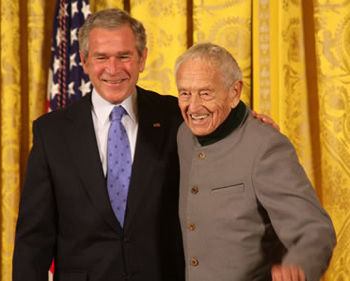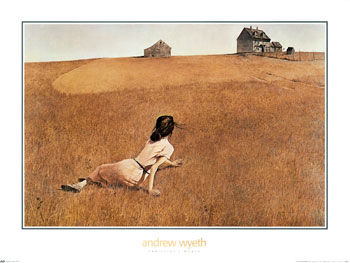
Wind from the Sea
Two Patrons of America: Andrew Wyeth and George W. Bush
When Andrew Wyeth marched up the steps of the golden stage in the White House East Room, he did so with remarkable vivacity. Greeting President George W. Bush with tactile familiarity exposed him not only as America’s distinguished painter, but also as a personage of a heartfelt nature. At that instant in 2007, Andrew Wyeth and George W. Bush stood side by side in candid conversation. Moments later, the President presented him the National Medal of the Arts.
The President’s wife Laura had decorated one of the rooms in the White House with paintings that they owned in order to make the space feel like home. She called one of Andrew Wyeth’s paintings “Island of Maine” and it gave George W. Bush the opportunity to remember the summers he spent with his wife in Maine.
Art works that discreetly reveal some of Andrew Wyeth’s notable character traits are “Christina’s World” and the Helga series.
